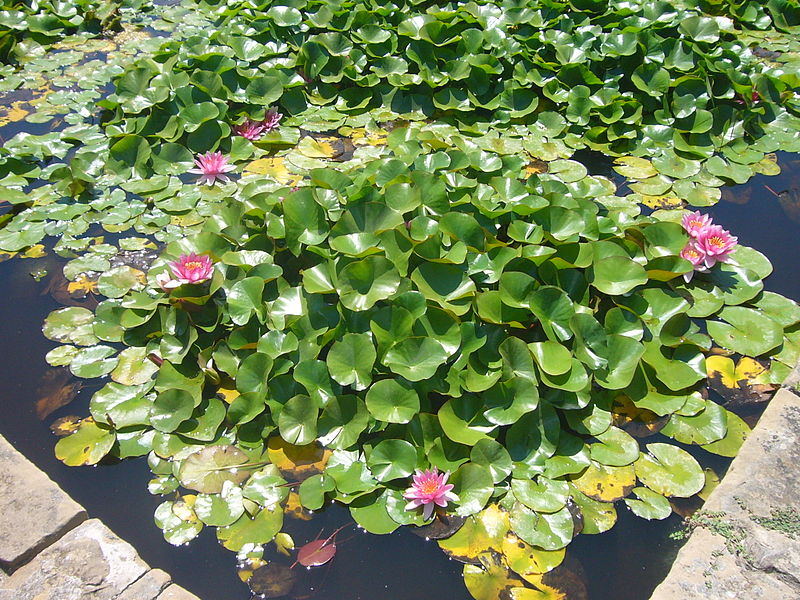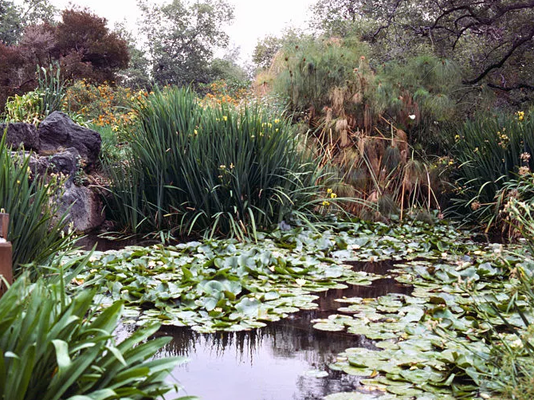How deep should a pond be?
Pond water depth is critical to what you want to put in it. Wildlife, goldfish, koi and pond plants all have different depth requirements which you should match if you want them to thrive.
Fish pond depth
In the UK, pond fish need a minimum water depth of 18”/45cm. This is so that when the water gets cold in winter, they can hibernate at the bottom in a 4 degree Celsius thermal layer, and far enough away from any ice above. But a water depth of 24”/60cm is better, and bearing in mind that no pond is ever filled right up to the top, that means that you should dig down or build up to 30”/75cm pond height, and 24” water depth.
Koi pond depth
Japanese koi need a depth of four feet in order for them to develop good body shape and overwinter properly, with most experienced koi keepers opting for 4-5’. Some koi ponds may be much deeper at 6’ plus, but when asked, most keepers said that if they could build the pond again they would go shallower as they fear swimbladder problems from deep water.
Wildlife pond depth
Conversely, wildlife ponds should be fishless, and far shallower. Maximum depth of 12” is fine for a wildlife pond, with wide, shallow areas for wildlife to climb in and out easily. According to wildlife and wetland experts, the shallow areas of a wildlife pond, just a few inches deep is where the most life exists.
Pond plants depth
Pond plants vary greatly in their preferred water depth, from five feet to five inches, and even just wet soil, in a bog garden. Water lilies like deep water (depending on species,) typically three feet deep or more, and an indication of lilies living in water which is too shallow is that their leaves and stalks protrude out of the water instead of sitting flat on the surface, as lilies should.
Protruding leaves are vulnerable to aphid attack on the underneath, so research your lily's required depth before planting and beware of eventual size, as some lilies grow too large for the average back garden pond. Oxygenators like it deep too, and will typically grow strands to six feet in length in summer, taking full advantage of bright sunshine, before sinking down to the depths to see winter out.
Marginal plants typically require a planting depth of between 6 and 12”, or a spade’s depth if digging a marginal shelf. Moisture-loving plants can go from roots permanently in water to damp loam or aquatic compost, and can even be planted outside of the pond altogether.
A design incorporating many different depths is ideal for the average pond containing both fish and plants. A deep area will provide a place for lily baskets and overwintering fish, with a shelf for marginal plants, and a shallow edge for wildlife and moisture-loving plants. Birds will bathe and drink in shallow water too.

Where to place the pond pump
In the summertime, the best place for the pump is in the middle of the deepest area. Here, muck and debris will congregate so by placing a solid handling filter pump there, it will pick up the waste and place it in the filter, where you want it.
In winter however the fish need to be in the deepest area, and by keeping the pump there and running, it will circulate freezing surface water to the bottom of the pond, disturbing the fish’s thermal hibernation layer. Move the pump up to a marginal shelf in winter, or turn it off completely.
Some ponds can be too deep for standard fountain pumps, as the riser stem and fountainhead need to project out of the water. If this is the case, turn a planting basket upside down to act as a pump stand, or for even deeper ponds, a floating fountain pump is the best option.
Pros and cons of pond depth
Deep ponds heat up and cool down more slowly than shallow ones, so water temperature will often be different from the air around them. This means that the first warm day of spring may not mean that the pond is ready for new fish to be added due to cold water temperature. Whereas very shallow ponds are at risk of freezing from top to bottom.
Deep ponds have a higher volume in relation to their surface area than shallow ones, so less of the water is exposed to light and heat at the surface, and they are less prone to nuisance algae growth.
Pond depth guide
- 0”/0cm moisture-loving plants
- 6”/15cm marginal plants
- 12”/30cm wildlife
- 24”/60cm goldfish
- 36”/90cm water lilies
- 48”/120cm koi carp
To calculate the amount of pond liner you'll need for your pond, no matter what depth, you can use our pond liner calculator.










Just looking for some advice on the depth of a pond im building
its 25ft by 20ft wanting to keep carp, and plants lilys etc could recommend a depth please
Thanks
I have pond with 2 goldfish and the deepest point is just 30cm. Pond is not big just like 2 meter × 1.5m.
Are they okay in my pond?